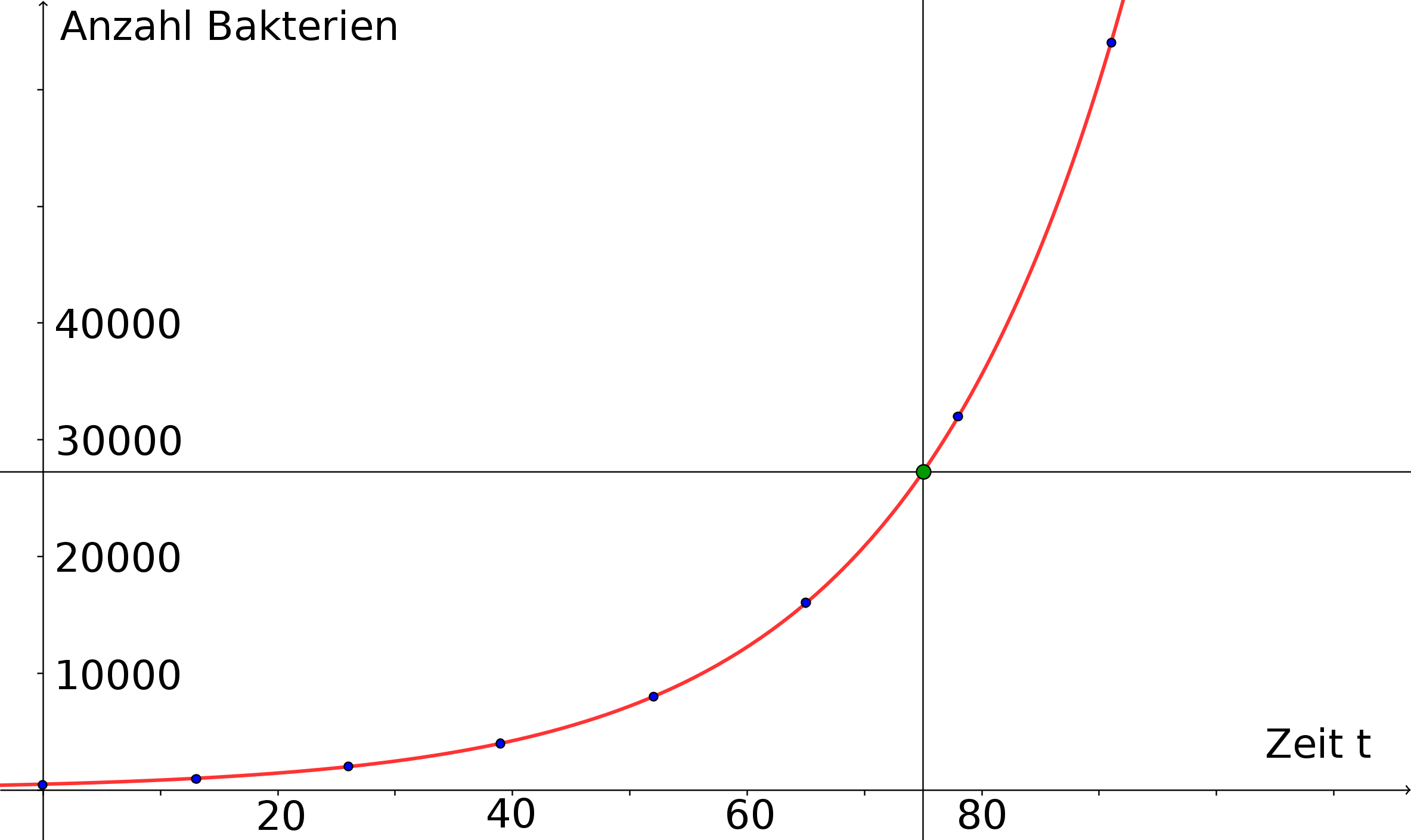Chapter 6 Elementary Functions
Section 6.4 Exponential and Logarithmic Functions6.4.1 Introduction
In contrast to power functions, in exponential functions the independent variable does not occur in the base of the exponential term but in the exponent. Accordingly, we will consider mapping rules such as
Exponential functions are relevant in many different fields, for example, for the description of biological growth processes - including diverse population models -, the processes of radioactive decay, or a certain kind of interest calculation. Let us consider an example.
Example 6.4.1
A bacterial culture starts with bacteria and doubles in size every minutes. We would like to know how many bacteria will be in the culture after hour and minutes (i.e. after minutes).
As a first try we can create a simple table of values that lists the number of bacteria in the population at the beginning ( min), after min, after min, etc., i.e. at multiples of the minutes duplication time:
| Time in min | 0 | 13 | 26 | 39 | 52 | 65 | 78 | 91 | etc. |
| Number of Bacteria | 500 | 1 000 | 2 000 | 4 000 | 8 000 | 16 000 | 32 000 | 64 000 | etc. |

From the graphical representation, the required number of bacteria can be read off a bit more precisely. However, for the exact specification we need the mapping rule underlying the graph, which we will first simply state here:
(In Exercise 6.4.3 we will give a reason for this functional relation.)
For (measured in minutes) we obtain the function value
Hence, after minutes approx. bacteria live in the considered population.
 Onlinebrückenkurs Mathematik
Onlinebrückenkurs Mathematik